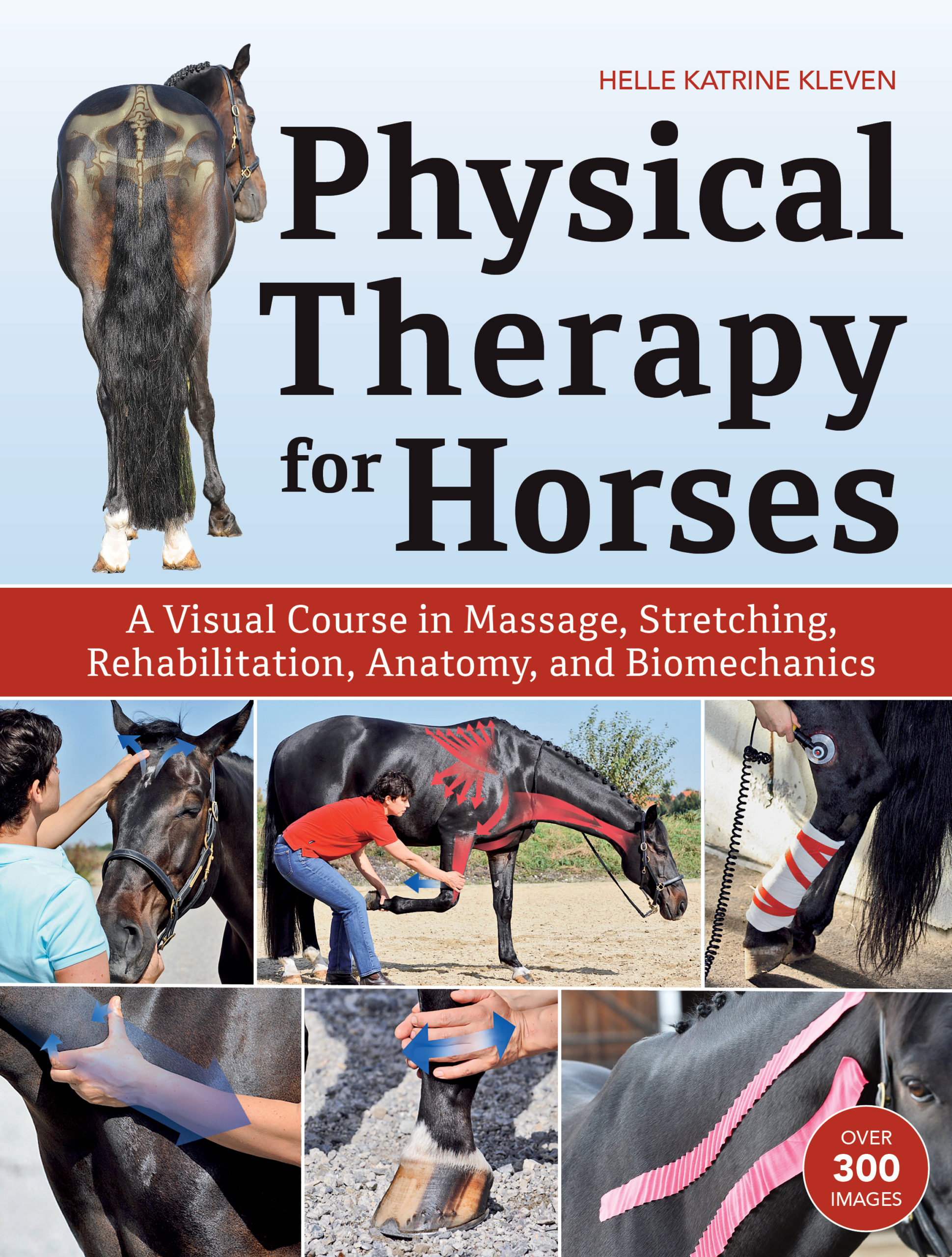In this excerpt from her book Physical Therapy for Horses, equine physical therapist Helle Katrin Kleven describes the function of the horse’s hind end anatomy—of particular interest to those of us who jump!
A racehorse is led into the start box. The signal is given, the door opens, and the horse can gallop off.
But for a split second, the horse shifts more toward the back, instead of galloping forward. First, he lifts his head, thereby moving his weight from forehand to hindquarters, flexes all of the upper joints of the hindquarters, as if he’s going to sit down, but then catapults himself forward with an insane amount of power—from 0 to as much as 37 mph (60 km/h) in three gallop strides, and that’s only with a one-horsepower “engine”!
Riding can be like driving a Porsche. Both—horse and Porsche—have a motor at the back, and both have tremendously powerful motors. I’m now going to take the horse’s “turbo motor” apart and look at it very precisely.
Because the horse is a flight animal, he needs speed and power to survive. The “motor” is comprised of big, fast, and strong muscles. (You’ll feel this when you massage them!) It’s not only muscular strength that helps the horse to develop his full ability, it’s his entire hindquarters that are responsible for his fast and powerful flight.
When you look at the skeleton of the hindquarters, you can see that it’s built differently from the forehand, where some bones stand vertically. In the hindquarters, the cannon bone stands straight, but all other bones are angled. The angles of the bones are important to the hindquarters’ ability to develop power and absorb shock. In addition, they are disposed with a fantastic apparatus of muscles and ligaments. One more difference from the forehand: the hindquarters have a joint connection to the trunk via the pelvic-sacral connection.
An essential construction for keeping the hindquarters upright is the two tendons that stretch between the stifle and hock joints, one in front and one along the backside. This construction is like a “frame saw” in design. When a flexing of the stifle joint takes place, there’s automatically also a flexing of the hock joint. Or vice versa, when there’s an extension of the stifle joint, there will be extension of the hock. This means that you cannot stretch the stifle and hock joints separately from one another. This can make it so difficult—for example, during a lameness exam—to determine in which joint the lameness originates from.
The “flexing of the haunches” refers to an increased flex in the hip, stifle, and hock joints, which is a prerequisite for the development of power and has an important shock-absorbing function. Without the “frame-saw design” the horse would not be able to maintain flexion of the haunches. During flexion, the horse gets “smaller” in the hindquarters and, thereby, can take more weight onto his hindquarters. Only in this way is it possible for the horse to have a quick and powerful reaction when he encounters danger or to collect himself under a rider for a jumping effort. Unfortunately, this is also the hardest part of training for every horse as the flexion of the haunches principally takes place through muscular strength. This means it takes a lot of power and effort from your horse. Try moving 10 meters in a squat position sometime. You’ll notice how strenuous it is!
This excerpt from Physical Therapy for Horses by Helle Katrin Kleven is reprinted with permission from Trafalgar Square Books (www.horseandriderbooks.com).

